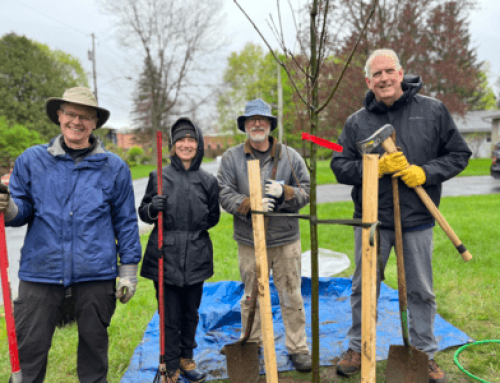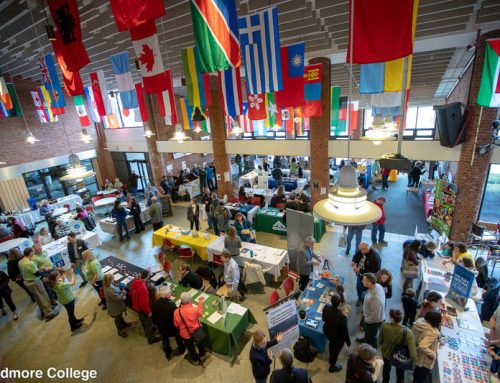
Sustainable Saratoga’s Urban Forestry Project works with homeowners and the City of Saratoga Springs to keep growing our urban tree canopy. We do this mainly through our annual Tree Toga tree planting events, where we send volunteers out to locations around the city to plant trees each April in celebration of Arbor Day. Tree Toga volunteers have planted 376 trees since 2014, and Tree Toga 13 on April 27, 2024 added another 35.
Have you ever wondered how we decide what types of trees to plant?
Diversity is essential
A recent survey of Saratoga Springs’ street trees found that maples make up about 40% of the city’s street trees. This is a risky ratio: if a pest that targets maples comes along, nearly half of our tree canopy would be destroyed. We have seen this happen with Dutch elm disease, which decimated elm trees. Planting smaller quantities of many different species gives us a more resilient urban forest that will be less impacted by any single threat. Having a diverse urban forest also ensures that there is food and shelter for a wide variety of wildlife. Our Tree Toga plantings increase diversity by including trees you may not have heard of, such as Tulip tree, Swamp white oak, Kentucky coffee tree, Hackberry, and Basswood.
A commonly used rule of thumb suggests that municipal forests should comprise no more than 10% of any particular species, 20% of any one genus or 30% of any single family. Using Maple as an example, a city might aim for no more than: 10% Red maple (species), 20% genus acer (maple), 30% Sapindaceae family which includes horse chestnut and maple.
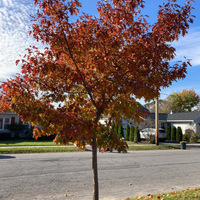
Northern Red Oak
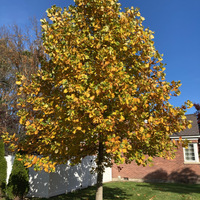
Tulip Tree in fall color
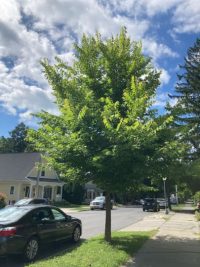
Hackberry
Natives are key
Native trees are species that have evolved in our general area and are adapted to our climate so that they can handle the seasonal weather extremes. Native trees provide the best food and shelter for our local wildlife, including insects, birds, and small mammals. More than half of the trees identified in the 2012 tree inventory are species that are considered invasive today, including two cultivars of Norway Maple and Callery (Bradford) Pear. With our pollinators under threat, we focus on choosing trees that provide them with what they need to survive and thrive. See our Replace your invasives post for more information about the benefits of choosing natives.
Native species make up the bulk of our list of trees to plant. But our climate is changing. We are also looking at species that were previously only successful in areas south of here, and considering new trees that can now live safely in our environment. These new trees will also provide food and shelter for insects and other wildlife that are migrating northward with the warmer climate conditions.
Decisions, Decisions
We take several factors into consideration when we make our tree selection each year, including
- What is doing well: We check on the growth and health of trees planted in previous years. Species that have done well and are easy to manage in the urban environment make future years’ lists.
- What’s available: We check our suppliers’ stock lists in the fall to see what they will have available in the spring.
- What the City is planting: We check the City’s current list of trees, making sure we are maintaining diversity.
- What provides the best value for wildlife: We want to attract pollinators and other wildlife.
Our selections change over time. We have removed some trees from our list. Ginkgo, for instance, is a beautiful and beloved tree that we’ve planted in past years, but it doesn’t provide value to our local wildlife. We added 3 new species in 2022: Shagbark Hickory, Sweetgum and London Plane. We’ll be watching them carefully to see how they do in our urban forest.

You can play a part in keeping our urban forest growing and thriving
Go to our Tree Toga page to:
- Request a tree for your front yard for 2025 and become a Tree Toga Tree Host
- Sign up to join the Tree Toga planting team
- Sign up to be a tree caregiver and water newly planted trees through the summer
Plant your own tree in your yard. See our Practical Info for Tree Planting and Care for information.




